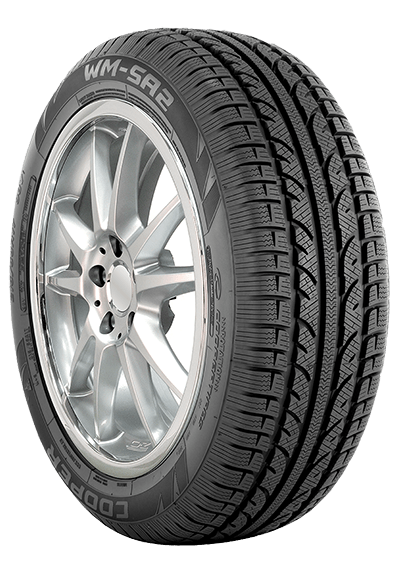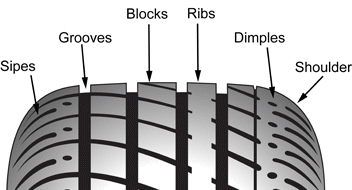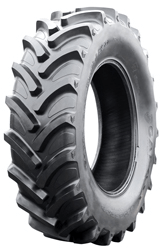Tires Information
Tires are flexible casings made of rubber that cover the rim of a wheel. They cushion the wheels of a vehicle to provide an enhanced surface grip. These products apply to an array of vehicles and equipment, including automobiles, heavy machinery, bicycles and personal transport, and material handling devices.
The most common tire structure today is pneumatic, which is supported by internal pressure. Robert Thomson, a Scottish engineer and inventor, is credited with the initial design of a pneumatic casing fitted with an inner tube (1845). Current models rely on a pressure seal between the rim and the wheel to contain the compressed air.
Tire production advanced in the 20th century after the introduction of synthetic rubber by Bayer in the 1920s and radial construction by Michelin in 1946. Today, the majority of tires are radial due to its superior fuel efficiency and handling.
Types of Tires
Manufacture
Bias construction comprises diagonal layers made of body ply cord material extending between the beads at a 30-40° angle to the tread’s centerline. As a result, bias tires facilitate a smooth drive over rough surfaces. However, the technology leads to increase in rolling resistance and diminished traction and control at greater speeds. Limited commercial production exists for supplying collector vehicles.
Radial tire design incorporates a cord angle equating to approximately 90° to the centerline. The body ply cords run parallel to each other and stabilizer belts located right beneath the tread. The belt overwrap positioned below the tread surface helps maintain structural stability. The radial structure decreases rolling resistance and promotes steering response at greater speeds. Radial casings offer longer tread life compared to earlier alternatives. A disadvantage is a bumpier ride at lower speeds on rugged terrain.
Tubeless tire construction was created to tackle the problem of flat tires. These tires have an inner lining instead of tubes. The lining consists of rubber with limited permeability to trap air inside the tire to prevent air leaks. As a result, the loss of air pressure from a perforated tire in motion is slowed down.
Solid tires are prominent in industrial applicationss. Many are non-pneumatic and consist of compounds derived from molding solid rubber or plastic. Such products are found in lawnmowers, golf carts, skateboards, and industrial vehicles such as instance forklifts. Installation is executed via a hydraulic press.
Semi-pneumatic tires contain a hollow center and are not pressurized. Other characteristics include minimum weight, low cost, resistance to puncturing, and cushioning. Standard uses include lawnmowers, wheelchairs, and wheelbarrows. Industrial applications employ rugged versions that feature a design that prevents the rims from pulling off.
Emergency tires serve as a temporary backup if a regular tire is unfit for use. They are smaller than normal tires, thereby saving storage space and reducing the overall vehicle weight.
Application
Passenger and light truck tires
In addition to the regular structures, a selection of specialized options exists including:
-
 High performance tires integrate soft rubber compounds that enhance traction and yield superior performance when cornering at increased speeds. Diminished tread lifespan is a disadvantage.
High performance tires integrate soft rubber compounds that enhance traction and yield superior performance when cornering at increased speeds. Diminished tread lifespan is a disadvantage. -
Summer tires are ideal for seasons without snow. They are designed to reduce noise and facilitate smooth driving and handling at high speed.
-
All-weather tires have a greater number of tread kerfs than the summer version. These tires are suitable for areas with short snow seasons. They feature characteristics that enable driving on wet roads in summer and snowy and icy roads during winter.
-
Winter tires have treads segmented into small blocks to improve steering and braking on snow-covered roads. The deeper grooves and rib pattern prevent slide slippage, and the lug design provides extra propulsion ability. Snow caught in the grooves forms snow pillars from cyclic up and down compression to result in better steering and traction in soft snow. Some winter casings are fabricated with metal studs to maximize traction for use on ice, but also cause damage to roads. By contrast, studless models comprised of hydrophilic or porous rubber materials stick to wet and icy surfaces. This version offers a comparable performance in most conditions, except on polished ice.
SUV/pick-up truck/crossover: Heavier passenger-only vehicles require tires manufactured for heavier loads, even if the vehicle's primary application is on-road use. These tires are often more durable with a more aggressive tread pattern than standard passenger tires. They are manufactured in performance, summer, all-weather, and winter varieties.
All-terrain: These tires are optimal for all-road navigation. They possess firmer sidewalls to avoid punctures when driven off-road. The tread patterns are developed with wider spacing keeping mud out of the treads. These tires perform adequately when used on paved surfaces and during wet and snowy conditions. These tires are common on SUVs and pick-ups that encounter diverse driving surfaces.
Truck and bus: Also called heavy-duty tires, these tires are used in vehicles such as commercial freight trucks, dump trucks, and buses. They are divided into groups based on vehicle position, including drive axle, steering, or trailer. Particular reinforcements, materials, and tread parameters permit operation with heavier loads.
Off the road (OTR): Casings of this type are best suited for construction vehicles, including backhoes, graders, and wheel loaders. The construction is either bias or radial. The bias structures are fabricated with numerous reinforcing plies enabling them to handle heavy loads and severe conditions.
Motorcycle tires
-
Sport touring tires are ideal for long, straight rides with medium cornering loads.
-
Sport street tires are designed for aggressive cornering at greater speeds. A shorter tread life offsets the traction advantage.
-
Track tires are optimized for racing. Their triangular form creates a larger point of surface contact. They have a shorter tread life than standard tires and are not suitable for street driving.

Aircraft: Landing gear must withstand extreme loads over short intervals of time. More tires are needed to distribute weight as aircraft load increases. The construction supports stability in conditions with heavy crosswinds. The tread pattern inhibits hydroplaning and promotes braking performance. The tires are inflated with nitrogen as a means of limiting expansion and contraction due to drastic temperature and pressure fluctuations during flight.
Agricultural: Farm vehicles, such as tractors and harvesters, employ the agricultural product category. Deep lugs with wide spaces in the tires result in an improved soil grip.
Specifications
Inflation pressure: Vehicle manufacturers supply recommended levels of inflation pressure. Inflation adherence facilitates for safe tire operation without exceeding the load rating and loading capacity. The maximum pressure rating is imprinted on the tire.
Load rating: Manufacturer’s load ratings stipulate the amount of weight a tire can support. Exceeding the levels can lead to difficulty in steering and cause unsafe driving conditions.
Speed rating: The rating identifies the maximum operational speed.
Service rating: These specifications apply to the tires used on buses and trucks.
Treadwear rating: The treadwear grade represents the tire's expected service life. The measurement compares the manufacturer’s product to a Course Monitoring Tire, the standard testing tire used for comparison purposes.
Standards
ASTM STP694—Tire reinforcement and tire performance
GMW14913—Tire treadwear
MIL-T-21865—Trucks, lift, fork, diesel pneumatic rubber tires
ZZ-T-391—Solid rubber industrial tires
References
Image credits:
Cooper Tires | Canadian Tire | ATG
- 10 pneumatic tires
- 12 volt heater canadian tires
- 305 50r22 mud tires
- 36 inch bandsaw tires
- 8x24 tractor tires
- alpha tractor tires
- aluminum brazing rod canadian tires
- anti blowout tires
- anti seize lubricant canadian tires
- battery blanket canadian tires
- belt tension gauge canadian tires
- carbide drill bits canadian tires
- coil spring compressor canadian tires
- cosmetic defect tires
- fiberglass belted radial tires
- gas siphon pump canadian tires
- gasket paper canadian tires
- glass belted radial tires
- military take off tires
- mud drag paddle tires
- non steel belted radial tires
- PEX crimping tool canadian tires
- piston ring compressor canadian tires
- press on band
- propane tank exchange canadian tires
- RC foam tires
- right angle screwdriver canadian tires
- rubber strap wrench canadian tires
- steel radial mud king tires
- stump grinder tires

